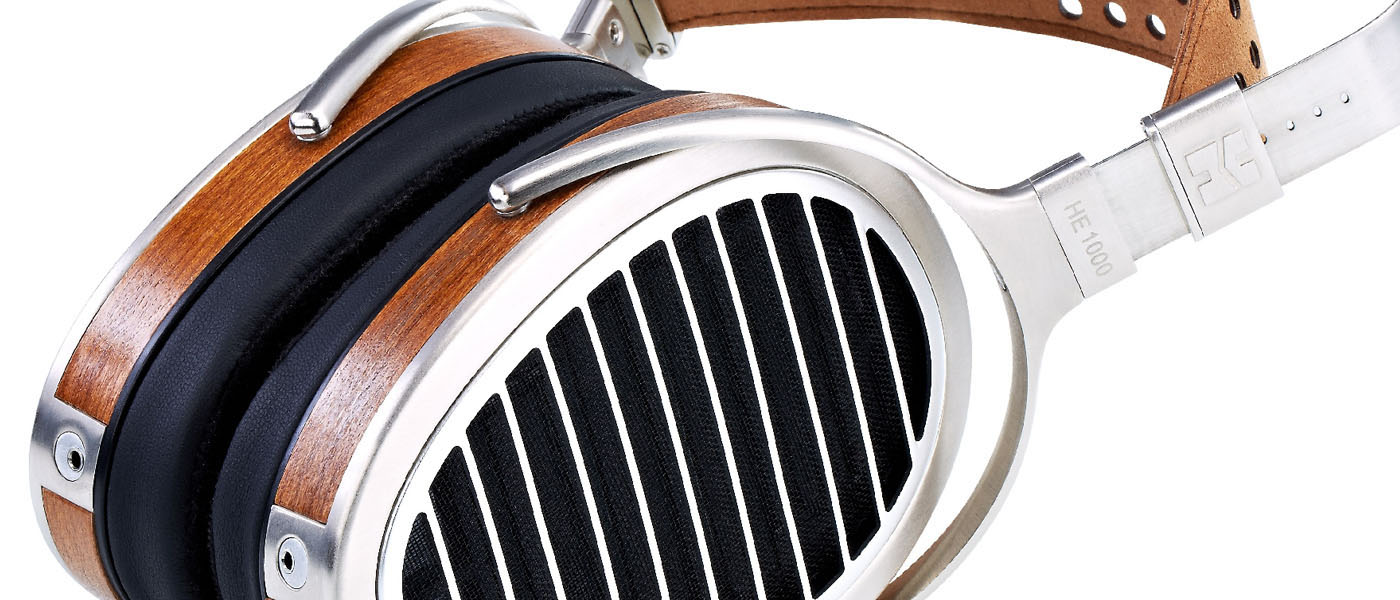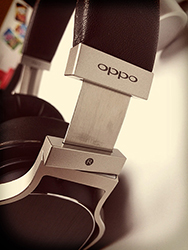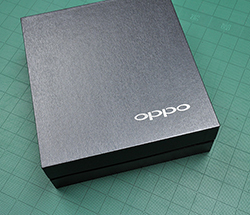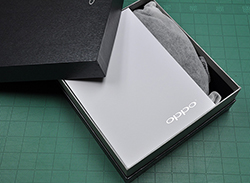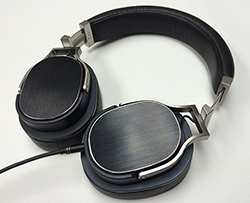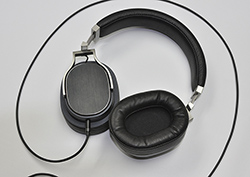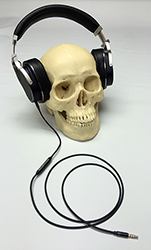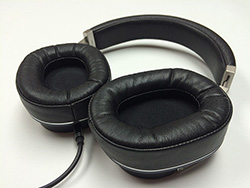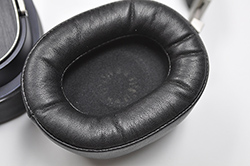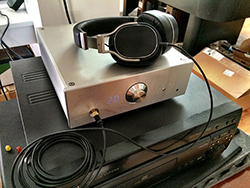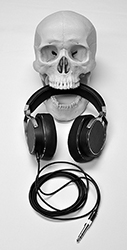OPPO PM-3 Headphones Review Highlights
OPPO has recently released a third model in their over-the-ear headphone line, the brand new PM-3. The other two models in the lineup are named, logically, the OPPO PM-1 and PM-2. When we compare the features of the entire headphone range, we find that the earlier two models share quite a bit in common. The midline, open back OPPO PM-2 is, electronically, the same as the top-shelf OPPO PM-1, just made with less expensive but equally solid surface materials (think Hugo Boss versus Savile Row).
The PM-3 however, is a suit of a decidedly different (pin) stripe. Being the only closed-back design of the line; the PM-3 can become an on-the-go friendly headphone choice through its ability to more completely isolate external sounds while allowing almost no leakage of your playlist-de-jour. Using new circular planar magnetic drive units that technologically mirror the drivers of the other models, the PM-3 headphones bring the same, well received sound quality, of the PM-1 and PM-2 to a much more approachable price level.
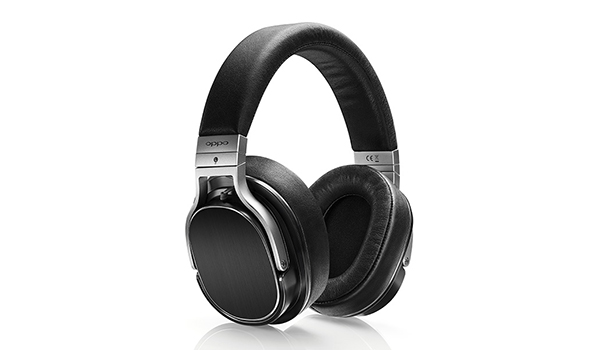
OPPO PM-3 Headphone Highlights Summary
- Nicely balanced sound veering just a little to the warm side
- Midrange sonics are particularly detailed without sounding thin
- Very comfortable to wear for extended periods
- Excellent build quality and materials
- Comes with a choice of optional cable for use with iOS or Android devices
Introduction to the OPPO PM-3 Headphone Review
I am rather fickle when it comes to headphones. There, I said it! As a matter of fact, you may as well start calling me Goldilocks when it comes to the subject of audio headgear. “This pair sounds too bright, this pair has too much bass, this pair has not enough bass, this pair sounds too flat, this pair is too difficult to drive, this pair clamps my head like a vice, and this pair makes my ears too hot”…..you know the drill. I’ve owned several sets of headphones and earbuds over the years, like probably most of us have, and I only rarely ever found a pair that has satisfied my listening habits for more than a year on end. And it’s not because that I break them or that my hearing is going bad, it’s because I constantly feel that I’m having to make due with one compromise or another for a chosen model in my price bracket.
Now I’ve never owned a truly elite or expensive pair of cans, although I have sampled several at trade shows. My most expensive pair of phones retailed for $400 which, you would think, buys someone a rather nice set of transducers. But even then, after you live with them for a while, you start to uncover things that only extended exposure reveals to you. For example, not all of your music sounds equally great on your headset. Your Bach and your Beethoven don’t quite shine as much as your Bon Jovi and Buckethead. A month later, your friend comes over with their new phones and then all of a sudden the great sound you thought you had is…well…not so much compared to theirs. And another wrinkle is that, unlike loudspeakers, you’re wearing headphones. This opens up a whole other comfort related can of worms. And if your also concerned about looks and style? Geez, don’t get me started! See, what did I tell you? Goldilocks is alive and working for Secrets!
OPPO PM-3 HEADPHONE REVIEW SPECIFICATIONS
- Design: Planar Magnetic Over-the-Ear-Headphones
- Closed Back
- Driver Size: 55mm Diameter, Circular
- Magnet Structure: Neodymium
- Manufacturer Freq. Response: 10Hz – 50 kHz (Response in Free-field)
- Efficiency: 102 dB in 1 mW
- Nominal Impedance 26 Ohms
- Weight: 320 Grams
- Available Colors: Black or White with Chrome Trim
- MSRP: $399 USD
- OPPO
- SECRETS Tags: OPPO, PM-3, Planar Magnetic, Headphones, Over-the-Ear, Closed Back
In all seriousness though, when OPPO invited me to sample their new PM-3 headphones, I already understood that they had quite an existing pedigree to live up to. OPPO has shown themselves to be quite methodical about their product releases and when they have something new to unveil, they expect it to perform. I am happy to report that the PM-3s acquit themselves quite well. Are they perfect? No. Are they the best sounding sub-$500 headphones that I’ve ever heard? Quite possibly!
Design of the OPPO PM-3 Headphone
The first thing I noticed about the OPPO PM-3 headphones when they arrived at my doorstep had nothing to do with the headphones themselves. What caught my attention first was their packaging. The phones come enclosed in a very nice hard shell protective case that is covered in stylish black denim. All this was packaged in a glossy, heavy stock cardboard presentation box. Even the large instruction manual was printed on heavy stock paper using a font size that doesn’t require a microscope to read and with velum front and back liner pages no less. Right off the bat, before I even got to the headgear, I was made to feel as if I was about to open something very special. People used to call these details “the little things,” and it’s very apparent that someone at OPPO has been studiously paying attention to them. Well done, expectations have been successfully set!
When you finally pick up the PM-3 headphones, you definitely get the sense that they are a quality built set of cans. While they substitute synthetic leather for real on the ear cups and headband, and some plastic in place of metal on the driver enclosures, everything feels suitably plush and sturdy in the correct places.
Nothing feels loose or shaky and all material tolerances seem admirably tight. Regarding the styling of the headphones themselves; they share the same family appearance as the PM-1 and the PM-2 headphones. They strike me as very “Herman Miller-ish,” kind of like an Eames chair for my head. Their modest weight of 320 grams promises to be an easy load on my neck and, when worn, the ear cups comfortably rest just outside the edge of my ears. Clamping force is sufficient but not oppressive, so wearing these for an extended session should be a non-issue. As you can see in the picture, the PM-3s extend to fit my ample lid quite easily and comfortably.
The headphones come with a 3 meter long detachable cable and a 6.35 mm threaded headphone adapter. Also included is a shorter 1.2 meter mobile cable that can be specified for either an Android or iOS devices when you purchase the cans. The mobile cable has an integrated mic with volume, navigation and phone controls in line.
In terms of the actual driver design of the PM-3 headphones, Jason Liao of OPPO describes them thusly:
“The planar drivers in the PM-3 are derived from the PM-1/PM-2 drivers, but are smaller and optimized for the closed back design. The PM-1/PM-2 driver has an oval diaphragm measuring 85×69 mm. The PM-3 driver has a round diaphragm with 55mm diameter. The magnetic structures of the two drivers are pretty much the same. The diaphragms have the same 7-layer construction but the PM-3 diaphragm has a slightly different voice coil trace layout, and its impedance is slightly lower at 26-Ohm vs. PM-1/PM-2’s 32-Ohm.”
So, in a nutshell, we have planar magnetic drivers, which are known for their transient response and airy, effortless reproduction, packaged in a modestly smaller size with closed backs and presented as an efficient, easy to drive load. These are a very desirable set of specs for both an audiophile and road warrior. Let’s see how they perform.
The OPPO PM-3 Headphone Setup and In Use
For the majority of my testing, I used the PM-3 headphones with my iPhone 5s when on the go. When at home, I would listen to the OPPOs through either an Audio GD-Compass 2 headphone amp/DAC or the Burson Conductor Virtuoso. While the PM-3s obviously don’t expressly need a dedicated headphone amp to sound good, it can help bring out their full potential when doing critical listening.
As a commercial artist by trade there are a number of times I’ll be on a tight deadline and have to put in late nights at the drawing desk or workstation. Music is an excellent motivator and having a good sounding pair of headphones to keep me company while working nights is a very desirable thing. It is also a necessity that those headphones be comfortable to wear for hours at a time.
From a comfort standpoint, the OPPO PM-3 headgear was an excellent companion. The ear cup and head band material was very soft and my ears did not get overheated or irritated after the hours racked up. Clamping force was very comfortable. It wasn’t too tight but it still kept a good seal around my ears. That, combined with their lower weight made them a very easy load to bear. I would describe the sound of the PM-3 headphones to be fairly neutral with just a hint of warmness. There is plenty of detail to be found in their sonic signature, particularly in the midrange, without sounding overly analytical or sterile. The treble is very appealing to listen to; “very quick and effortless” was a repeated observation in my listening notes. Guitars had plenty of bite to their sound and strings were sweet sounding, with just the right amount of edge. I never got any sense of harshness when listening to horns either.
I have not previously listened to the OPPO PM-1 or PM-2 models but, going by previous experience, decent sounding treble and midrange was to be easily expected from the PM-3 planar magnetic drivers. What was a pleasant revelation was that the new headphones had the ability to produce tight, solid and ample bass as good as or better than a number of other closed back, dynamic headphones that I’ve listened to. To my ears, the bass level is not over-exaggerated, it’s right where it should be, giving lower registers on the piano and electric bass the right amount of weight and heft.
Even the odd hip-hop and techno track sounded suitably “jiggy” when played through the OPPOs. While going out for walks in my neighborhood, the OPPOs did a great job keeping out most external noises (wind, cars, kids on bikes, etc.) while being able to be run quite nicely off my iPhone 5s with the Onkyo HF player app. The included iOS compatible cord worked as advertised controlling volume, track selection and handling calls very conveniently.
Using the easy to drive PM-3 phones with a dedicated headphone amplifier may just seem like gilding a lily but it actually helped the overall sound come into tighter focus for me. Bass hit harder and everything else just felt like it was under better control. Both the Burson and the Compass 2 needed no more than a quarter turn of the volume dial to get the OPPOs to play quite loudly. Well recorded vocals sounded quite stunning, revealing a performer’s vocal nuances and textures very clearly. It was also much easier to identify and appreciate all the vocal layers in choral music with these cans and an amp.
Overall, they are a very balanced and natural sounding pair of headphones. I didn’t get the impression that they favored one range of the spectrum over another. If I had to pick one standout quality to their sound it would be the lovely detailed way that they rendered both male and female vocals. Over and over I would notice things in familiar songs when an artist was singing that I hadn’t picked up on before. Some people might think that this may indicate a more forward midrange section but I’m not convinced of that. It’s definitely not a louder midrange; it’s a more detailed midrange that I was noticing.
Are there any niggles? For $399 bucks there’s not much that I can come up with to criticize. I have a pair of Beyerdynamic DT-880 PRO 250 ohm cans that the PM-3 just decimates in terms of bass reproduction and midrange detail. My V-Moda M-100s may be a little more “fun” to listen to with certain kinds of music but their bass can occasionally be too much and they’re not near as comfortable to wear as the OPPOs for any length of time. Even my 13 year old son whose musical tastes (ahem) extend to the more bass-heavy selections, said that he would pick the PM-3 as his choice out of all the headphones we have around because they just sounded the most natural to him.
At $100 more, the closest competitor that I could think of would be the HiFiMAN HE-400i. I sampled them at CES 2015 back in January and I remembered them sounding very good but I can’t really make any meaningful comparisons as I listened to them for maybe all of 10 minutes. They also may not be quite as easy to drive from a mobile device as the PM-3 cans are. OPPO, I believe, has hit a price/performance sweet spot with they’re new headphones. They’ve seemingly distilled the essential essence of their higher end headgear into a much more affordable package that can be used at home or on the move successfully, without sacrificing apparent quality of build or sound.
Conclusions about the OPPO PM-3 Headphone
The OPPO PM-3 headphones are a rather remarkable accomplishment. Using a driver technology that, until recently, was reserved exclusively for the most expensive audiophile headphones out there, OPPO has brought to market an exceptionally great sounding pair of cans that won’t break the bank or mortgage the house. They have taken all the technical knowhow and experience gained from producing the well regarded PM-1 and PM-2 and created a new iteration that is efficient enough to run off a smart phone and still sound damn good while doing so.
Pair them with a decent headphone amplifier and you will have yourself an extremely satisfying home listening rig as well. The build quality is excellent and they are light weight and stylish to boot. They have probably the most natural sound signature of any headphone that I have ever heard in this price range. To get noticeably better sound than what the OPPO PM-3 headphones can provide, I believe you would have to spend noticeably more money. Ah….the porridge is warm, the bed is comfy and the headphones sound sublime. Goldilocks is happy indeed!


